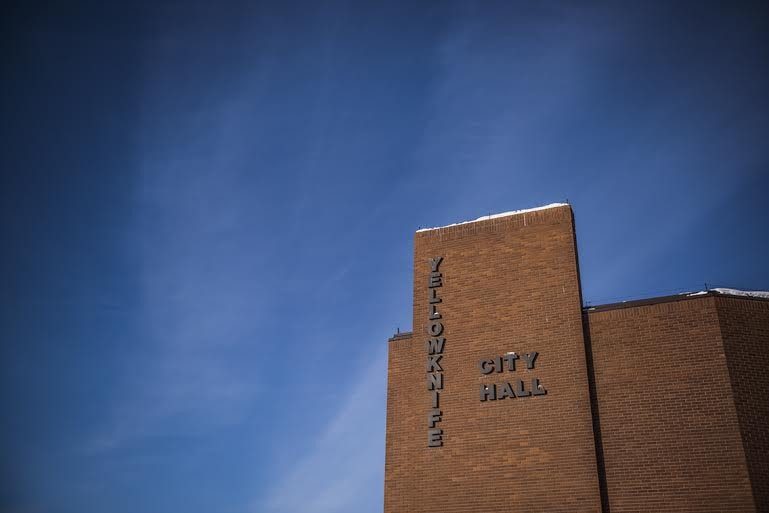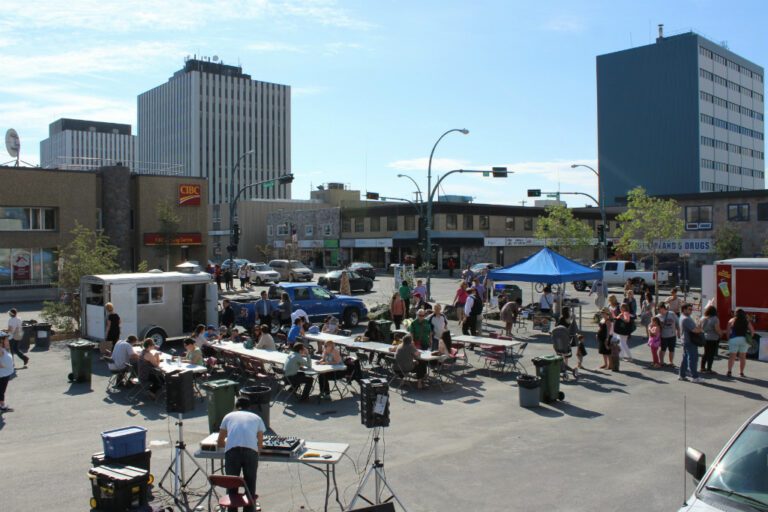The long-brewing development of a piece of prime Yellowknife real estate takes on another, more private shape, while the Development Incentive Program stays downtown.
Developing Twin Pine Hill
The long-ongoing and much complicated development of Twin Pine Hill took a few more steps towards its final form at yesterday’s Municipal Services Committee. The latest proposal consists of 126 family dwelling units in 21 buildings, which requires council to change the area to a residential zone. Twin Pine Hill was originally intended to host a hotel, and was zoned accordingly.
Coun. Cory Vanthuyne had some questions, however, about the viability of a multi-family-unit development when he fears the market may be reaching its cap. Developer Greg Herndier responded by claiming that the flexibility of the design, which includes modular segments to precisely accommodate demand, should be able to accommodate any potential market softening. He added that the plan wasn’t to develop the entire area all at once, anyway. “We had a previous project, where six months in, we’d saturated the market, and waited a full year to go back in. We’re not planning on getting everything done in a year and then leaving. That’s just not feasible.”
The bylaw comes to first reading next week.
Another issue regarding the area was that council, expecting a hotel development, had set aside money to develop tourism-oriented trails around the area. “I don’t want to spend to spend potentially half a million dollars on what will essentially be private trails,” said coun. Adrian Bell.
Mayor Mark Heyck responded, saying that although the area is intended for private residences and will no longer be a tourist draw, “I don’t think you could categorize them as a private trail.” The trails, if developed, would link up with the rest of the city’s trail network, added Vanthuyne.
Downtown first
Revisions to the Development Incentive Program came up in the Municipal Services Committee as well, with councillors Bell and Vanthuyne raising objections to a proposed amendment which includes provisions for “secondary” areas other than downtown.
The DIP has been struggling to gain traction with developers, so city administration brought the motion forward for the proposed amendment to try and increase participation and “encourage residential intensification.”
The proposed amendment would allow the City, without council approval, to provide tax abatements and grants of up-front money for developers in both the downtown core, and in certain outlying areas, including Old Airport Road and Old Town.
Both councillors pointed out that development happens outside the downtown area, “mostly owing to cheaper development costs,” said Bell, and Vanthuyne adding that “it will continue to be developed,” but that the downtown requires more significant incentives to encourage development.
Bell also pointed out that part of the fund comes from downtown parking revenues, and that some citizens had come forward to accuse the City of funding a “cash-grab.” “We told them that we’re reinvesting that money in the downtown, which justifies that, and so I think that part of the fund should remain in the downtown. If we need to expand the downtown to ensure this bears fruit, so be it.”
With some contention, the two councillors prevailed. The secondary areas will be removed from the amendment. Jeff Humble, director of planning and development for the City, will be making the changes to bring forward to council for next week.
For more real estate stories, the city’s best rental board and property listings, visit Property North






